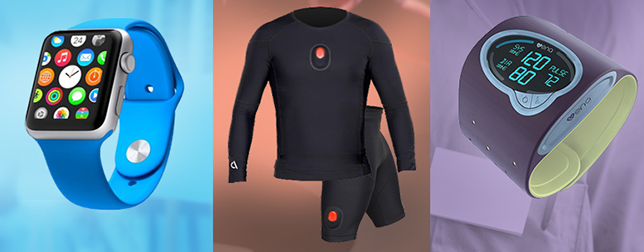Insurers have long been interested in knowing more about the potential applications of wearable tech for many years, but wearable devices have not been fully implemented in life insurance products to date. However, advances in these devices can revolutionize the industry. Julianne Callaway in her article in Digital Insurance looks at how wearable technology can influence life insurance.
The wearable technology market is growing rapidly. According to International Data Corporation, around 125.5 million wearable devices would be shipped worldwide in 2017 and the market is projected to double by 2021. Currently, one in six people in the U.S. own a wearable fitness device, and nearly half of all wearable device users are between the ages of 18 and 34. “Wearable technology holds great promise in relating life insurance products to millennial consumers who expect digital engagement and value experiences.”
Fitness trackers collect data such as periods of inactivity, resting heart rate and sleep. These metrics all have the potential to support a life insurance discount because activity, heart health and sleep all contribute to mortality expectations.
Read more Wearable Tech is Here to Stay with a Robust Presence in the Future Healthcare Industry
Increased use of wearable devices could benefit life insurance policy development. This may include the ability to help consumers manage stress as well as other mental health applications. Development of sweat-sensing wearables could help identify conditions such as diabetes, as well as smoking and alcohol use. These capabilities can boost the quality of life for users through improved well-being. A wearable device detecting a person’s smoking habits may be very useful, because it may be used to promote a smoking cessation benefit to participating insurance customers.
Wearable devices can serve as:
- A non-invasive underwriting evidence source – gathering metrics to assess risk in less time than a full medical exam.
- A tool to improve in-force management – helping insureds maintain a healthy lifestyle and reduce lapse experience.
- A consumer engagement opportunity – providing customer value beyond insurance protection.
- A way to improve mortality experience – reducing the incidence of early deaths from chronic conditions such as diabetes and heart disease.
- A signal to identify super-fit, active people – encouraging life insurance purchase from consumers who feel invincible.
- Chronic disease management – helping consumers actively control conditions.
- Earlier identification of diabetes and heart disease – allowing for earlier treatment.
- Improving the obesity epidemic – encouraging physical activity through premium discounts.
Data collected from wearable devices may not replace existing evidence collected as part of a fully underwritten policy, but it could provide supplemental evidence to enhance the decision-making in a simplified issue policy.
Read more Financial Incentives, Wearable Tracker Increase Physical Activity in Heart Patients
In life insurance, improved health is at the heart of all applications of wearable technology. Wearable devices can collect data on a person’s health behavior and thus prevent and identify serious health conditions, such as diabetes and heart disease. An insurance customer can be benefited by this data, which may help them change their lifestyle and improve health. With the prevalence of obesity-related health conditions, wearable devices can benefit the life insurance industry with products that encourage activity.













